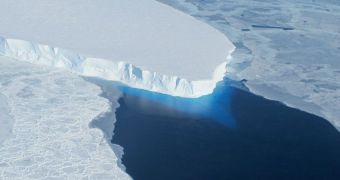As it turns out, Mother Nature is a huge fan of George R. R. Martin and his epic fantasy novels. In fact, it seems to like George R. R. Martin's work so much that it has staged its own version of “A Song of Fire and Ice.”
Since Mother Nature likes to keep things simple, this version is pretty straightforward: birth a bunch of volcanoes under an ice sheet, have them torch it from beneath, and sit back and enjoy the show.
Not to beat about the bush – any longer, that is – researchers writing in the journal Proceedings of the National Academy of Sciences say that the Antarctic's Thwaites Glacier is presently being melted from below by geothermal heat.
In their paper, the Institute for Geophysics at The University of Texas at Austin researchers detail that, according to evidence at hand, this geothermal heat originates both from moving magma and from volcanic activity.
What's interesting is that this heat is not evenly distributed under the ice block's tummy. On the contrary, specialists explain that, as far as they can tell, the Thwaites Glacier is currently resting on a structure similar to multi-burner stove.
What they mean is that, whereas some parts of this glacier are exposed to impressive temperatures and are pretty much roasting, others get about as much heat as one would expect a nice cup of coffee to let out, EurekAlert explains.
As detailed in the journal Proceedings of the National Academy of Sciences, it is likely that this peculiar environment under Antarctica's Thwaites Glacier is the reason why this block of ice is rather unstable and has a fast flow.
“It's the most complex thermal environment you might imagine. And then you plop the most critical dynamically unstable ice sheet on planet Earth in the middle of this thing, and then you try to model it. It's virtually impossible,” explains researcher Don Blankenship.
The scientific community has reasons to believe that the Thwaites Glacier is well on its way to collapse, but cannot say for sure how and why this will happen. What they do know is that, geothermal heat aside, this block of ice is also melting due to climate change and global warming.
It is estimated that, were this ice block in the Antarctic to melt in its entirety, global sea levels could go up by as much as 1-2 meters (approximately 3.3-6.5 feet). Should the entire West Antarctic Ice Sheet follow its lead and also melt, the increase in global sea levels could be one of 2-4 meters (6.6-13 feet).

 14 DAY TRIAL //
14 DAY TRIAL //